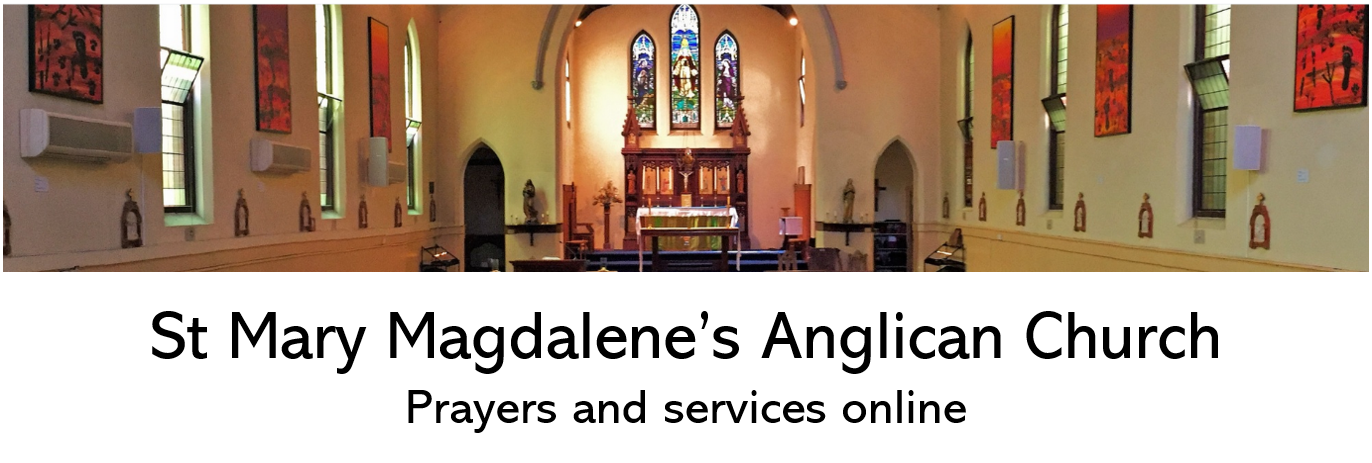
Fr Philip Carter offers a ministry of spirituality, with a series of meditations on some questions that we may ponder as we consider our life in God.
You will find here his reflections and questions for meditation, images, music and poetry to enrich your life’s journey.
What Jesus offers is a way of being in the world that is real and authentic
When Christians are described as followers of Jesus, it is important to be clear that we follow, not the Jesus of history, not just a set of teachings, but someone who is our contemporary, and who, because of the resurrection, is alive.
I want to know Christ and the power of his resurrection and the sharing of his sufferings by becoming like him in his death, if somehow I may attain the resurrection of the dead.
Philippians 3:10
Luke Timothy Johnson says it is better to speak of “learning Jesus” than of “knowing Jesus” – for we are “concerned with a process rather than a product”. In Paul’s passionate longing to experience Jesus, and to “become like him”, we get a glimpse of what is involved in learning Jesus: a life of mystery, reciprocity, respect, openness, silence, reflection, patience, suffering, openness to the other’s truth, and creative fidelity – the “willingness to trust, be attentive and suffer with the other even as the other changes”.

I am the way, and the truth, and the life
John 14:6
What Jesus offers is a way of being in the world that is real and authentic, and one which is genuinely life-giving and freeing. The only absolute is the absoluteness of unconditional love. So Jesus is not offering us a creedal statement or a proposition – but a way of being that is utterly truth-full and which waits to be learned, practised and lived. Talk about it, and we are tempted to make exclusive claims: live it, and we discover his grace-full and inclusive way of life.

Be compassionate just as God is compassionate.
Luke 6:36
This is not a task or a duty. It is a discovery of not only who we are, but whose we are. It is nothing less than living the intimacy and mystery of God, in whose image we are made. It is learning to live without anxiety, and without competition. Compassion is our proper identity. It is the heart of the new community of God, the new way of being-in-relation.
The images in this post are of light installations by Bruce Munro.
British artist Bruce Munro is best known for immersive large-scale light-based installations inspired largely by his interest in shared human experience. Recording ideas and images in sketchbooks has been his practice for over 30 years. By this means he has captured his responses to stimuli such as music, literature, science, and the world around him for reference, reflection, and subject matter. This tendency has been combined with a liking for components and an inventive urge for reuse, coupled with career training in manufacture of light. As a result Munro produces both monumental temporary experiential artworks as well as intimate story-pieces. Source: Bruce Munro
Ubi caritas et amor, Deus ibi est.
Congregavit nos in unum Christi amor.
Exsultemus, et in ipso jucundemur.
Timeamus, et amemus Deum vivum.
Et ex corde diligamus nos sincero.
Ubi caritas et amor, Deus ibi est.
Simul ergo cum in unum congregamur:
Ne nos mente dividamur, caveamus.
Cessent iurgia maligna, cessent lites.
Et in medio nostri sit Christus Deus.
Ubi caritas et amor, Deus ibi est.
Simul quoque cum beatis videamus,
Glorianter vultum tuum, Christe Deus:
Gaudium quod est immensum, atque probum,
Saecula per infinita saeculorum.
Where charity and love are, God is there.
Christ’s love has gathered us into one.
Let us rejoice and be pleased in Him.
Let us fear, and let us love the living God.
And may we love each other with a sincere heart.
Where charity and love are, God is there.
As we are gathered into one body,
Beware, lest we be divided in mind.
Let evil impulses stop, let controversy cease,
And may Christ our God be in our midst.
Where charity and love are, God is there.
And may we with the saints also,
See Thy face in glory, O Christ our God:
The joy that is immense and good,
Unto the ages through infinite ages. Amen.
For a printable PDF of the text of this meditation please click on the link below.




